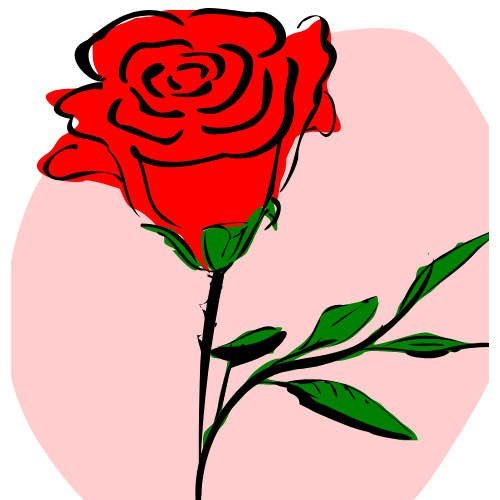


Flowers have always been a cherished part of human culture, symbolizing beauty, love and the natural world. However, flowers are ephemeral and their beauty fades quickly. In order to extend their lifespan, two main methods are used:drying and preserving. While both methods aim to keep flowers aesthetically appealing for longer, they differ greatly in terms of technique, appearance, and practical use. In this comprehensive guide, we'll delve into the detailed differences between dried and preserved flowers, exploring their unique characteristics, advantages, and best uses.
Drying flowers is a traditional method that has been used for centuries. The process involves removing water from the flowers, which helps maintain their structure and appearance over time. Let's take a closer look at how dried flowers are made:
Hanging: Tie flowers into small bunches and hang them upside down in a dark, dry, well-ventilated area. This method is simple and effective for most types of flowers.
Rack Drying: Place flowers on a drying rack or screen and dry in a flat layer. This method works well for delicate flowers that may warp when hung.
Flowers are buried in silica gel, a desiccant that absorbs moisture. This method is faster than air drying and helps to retain the color and shape of the flowers more effectively.
Flowers are placed in microwave-safe containers filled with silica gel and heated in a microwave oven. This is the fastest method and is useful for preserving the color and shape of delicate flowers.
Dried flowers retain a rustic, vintage charm often associated with nostalgia and a bohemian aesthetic. Over time, their colors may become softer and more muted in tone, adding to their antique appeal. The texture of dried flowers becomes fragile and can break easily if not handled with care.
Decorative Arrangements: Dried flowers are perfect for making rustic and vintage style bouquets, centerpieces and wreaths. Their natural look complements rustic and bohemian decorative themes.
Craft Projects: They are commonly used for craft projects such as making potpourri, pressed flower art and wreaths.
Herbal Applications: Dried flowers like lavender and chamomile are often used in herbal teas, sachets and beauty products because of their aromatic properties.
Preserved flowers undergo a more complex process that involves chemical treatment to maintain their fresh appearance and texture. This method has gained popularity because of its ability to create flowers that look and feel almost like fresh flowers and can last for a long time.
Flowers are placed in a solution of glycerin and water. The glycerin replaces the natural juices in the flowers, making them pliable and maintaining their lifelike appearance.
Flowers are treated with a combination of silicone and other chemical solutions to stabilize their structure and color. This method ensures that the flowers remain soft and vibrant.
Flowers are frozen and then placed in a vacuum chamber to remove moisture through sublimation. This process preserves the color, shape and texture of the flowers very well.

Preserved flowers maintain their fresh, lifelike appearance and vibrant colors. Unlike dried flowers, they do not fade or become brittle over time. Their texture remains soft and flexible, making them virtually indistinguishable from fresh flowers.
High-end Flower Arrangements: Preserved flowers are ideal for creating luxurious and elegant arrangements such as wedding bouquets, corsages and centerpieces.
Home and Office Decor: They are perfect for long-lasting home and office decorations, adding a touch of natural beauty without the need for frequent replacement.
Gifts: Well-preserved flower arrangements make thoughtful and long-lasting gifts for special occasions, as they retain their beauty for years to come.
Dried Flowers: The process is more natural and traditional, involving air drying, silica gel, or microwave drying. It focuses on removing moisture and extending the life of the flowers.
Preserved Flowers: This process uses chemical treatments, sometimes freeze-drying, to maintain the fresh appearance and texture of the flowers for a longer period of time.
Dried Flowers: They have a rustic, vintage appeal and colors may fade over time. The texture is crisp and delicate.
Preserved Flowers: They maintain a fresh, vibrant look and soft texture similar to fresh flowers. These colors stay vibrant for years.
Dried Flowers: While dried flowers can last for years, they are more prone to fading and fragility. They need to be kept in a dry environment to avoid deterioration.
Preserved Flowers: These flowers can also last for several years, but maintain their appearance and texture better. They are more resistant to environmental changes such as humidity and temperature fluctuations.
Dried Flowers: Best suited for rustic, vintage and bohemian decor. They are also popular in craft projects and herbal applications.
Preserved Flowers: Ideal for modern, luxurious, and elegant decor. They are often used for high-end flower arrangements and long-lasting home and office decor.

Avoid Direct Sunlight: Avoid direct sunlight to avoid fading of colors.
Dusting: Dust gently with a soft bristle brush or hair dryer at a cool, low temperature.
Humidity: Store in a dry place to prevent mold and mildew.
Avoid High Humidity: Keep away from humidity to maintain appearance.
Cleaning: Remove dust gently with a dry cloth or soft brush.
Placement: Avoid direct sunlight to prevent color change.
Both dried and preserved flowers have unique benefits that can satisfy different tastes and needs. Dried flowers bring a rustic, vintage appeal with their soft hues and delicate textures, making them ideal for nostalgic and bohemian decor. Preserved flowers, on the other hand, offer a realistic, vibrant look that lasts for years and is suitable for both elegant and luxurious settings.
By understanding the unique features and benefits of each type, you can make an informed choice that best suits your decorating preferences, craft projects or gift needs. Whether you're drawn to the antique charm of dried flowers or the timeless beauty of preserved flowers, both options allow you to enjoy nature's splendor in your space.
Embrace the timeless elegance of dried and preserved flowers to enhance your home, office, or special occasion with lasting floral beauty.